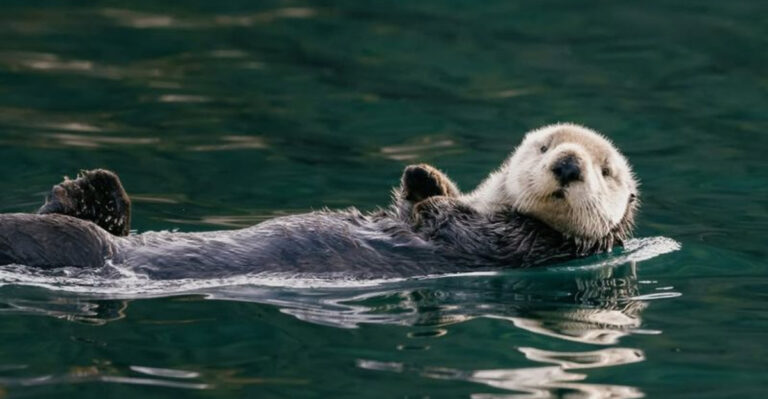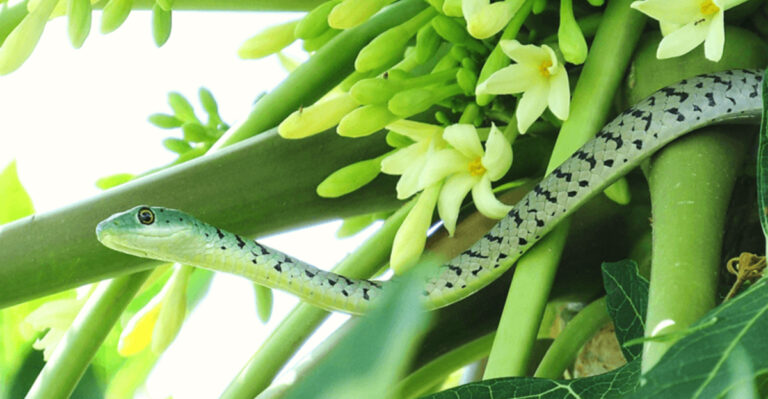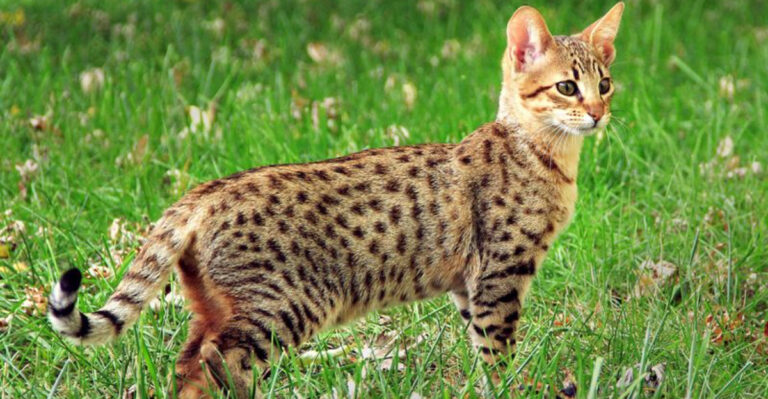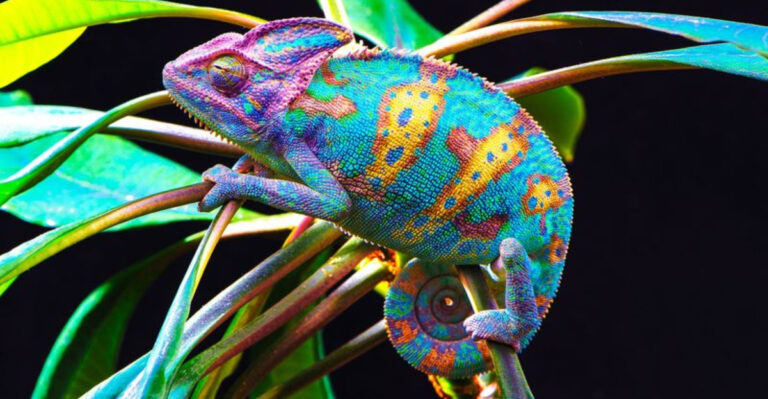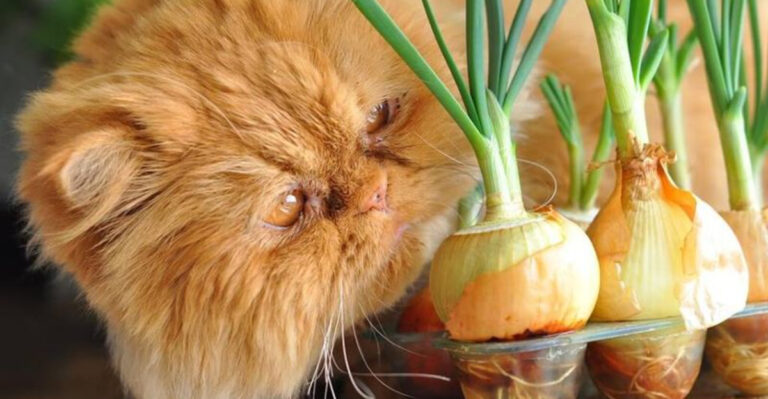11 Most Dangerous Reptiles In South America
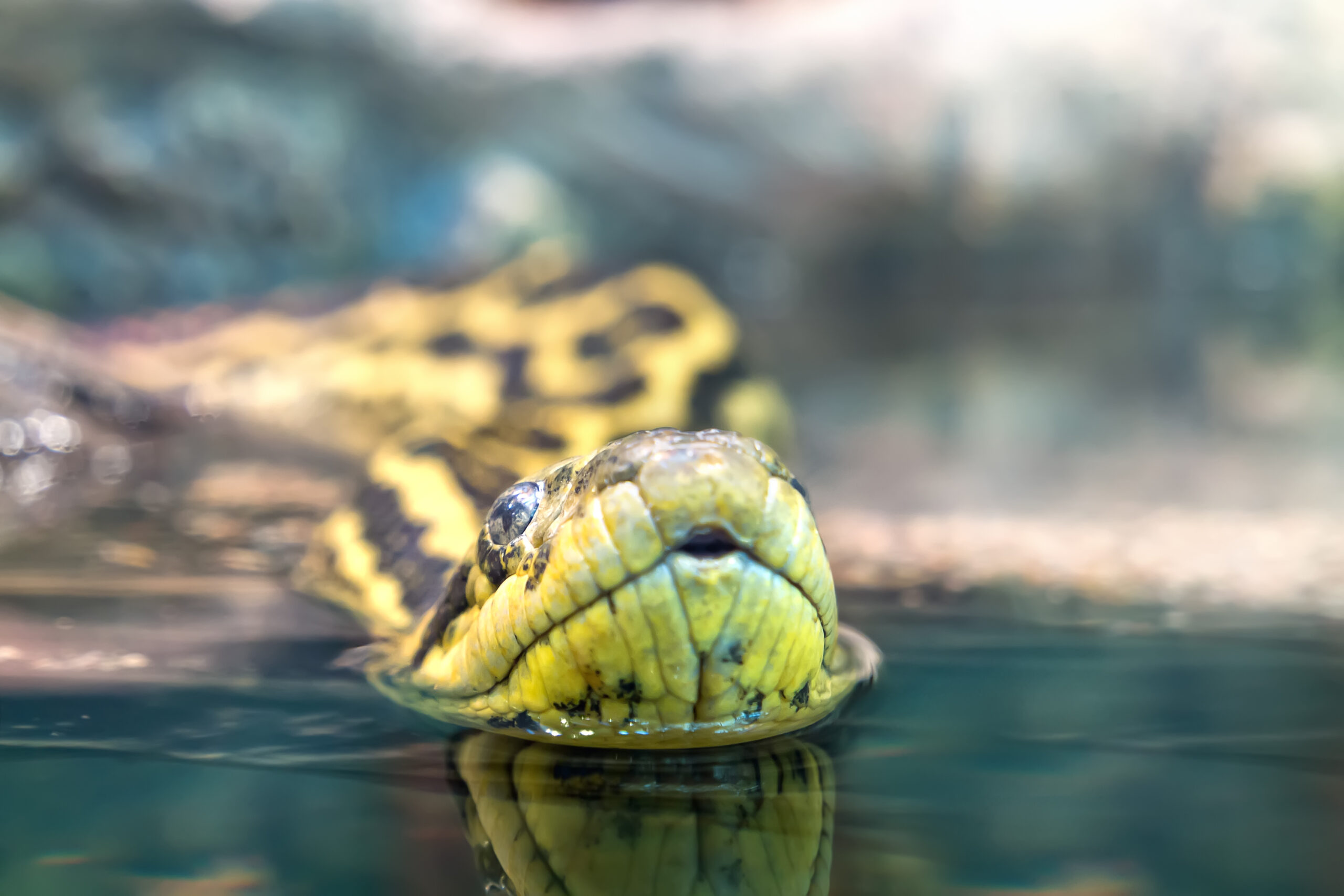
South America is a land teeming with diverse wildlife, including some of the most dangerous reptiles on Earth. From the dense rainforests of the Amazon to the arid regions of the Andes, these reptiles have adapted to a variety of habitats.
Their unique characteristics and behaviors make them both fascinating and fearsome. Here, we explore these remarkable creatures, each with its own formidable traits.
1. Green Anaconda
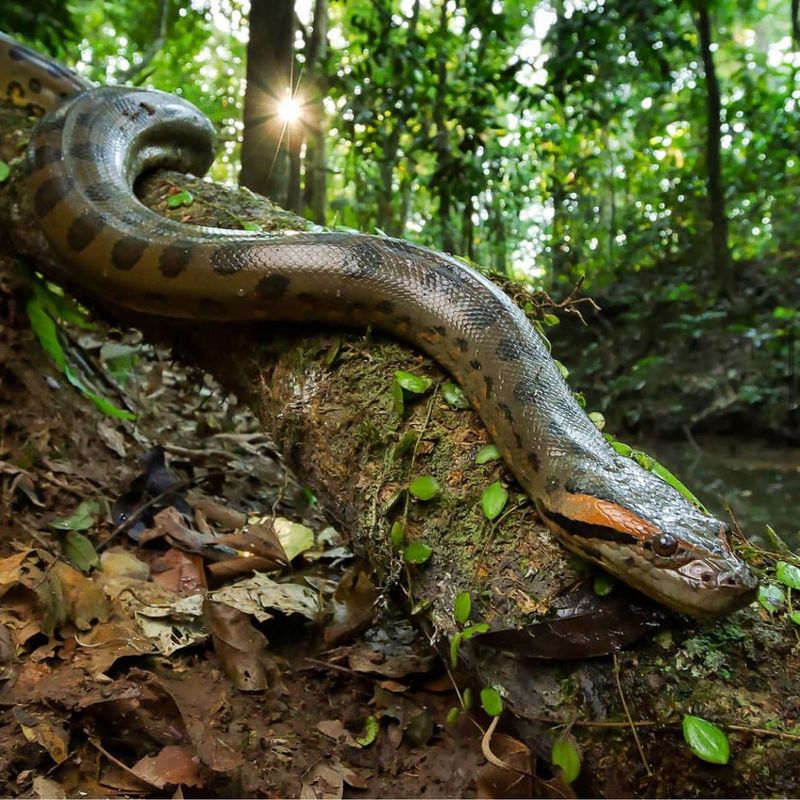
The green anaconda, lurking within the waterways of the Amazon, is a sight to behold. Known as the world’s heaviest snake, it can weigh up to 550 pounds. Its constricting power is legendary, capable of subduing large prey, including deer and caimans.
This reptile’s olive green body, marked with black splotches, provides perfect camouflage in swampy environments. It spends most of its time in water, using its stealth to ambush prey. When threatened, it prefers to escape rather than engage.
Despite its fearsome reputation, the anaconda poses little threat to humans unless provoked. Respect for its habitat minimizes potential encounters. If you find yourself in anaconda territory, keeping a safe distance is advisable.
2. Caiman Lizard
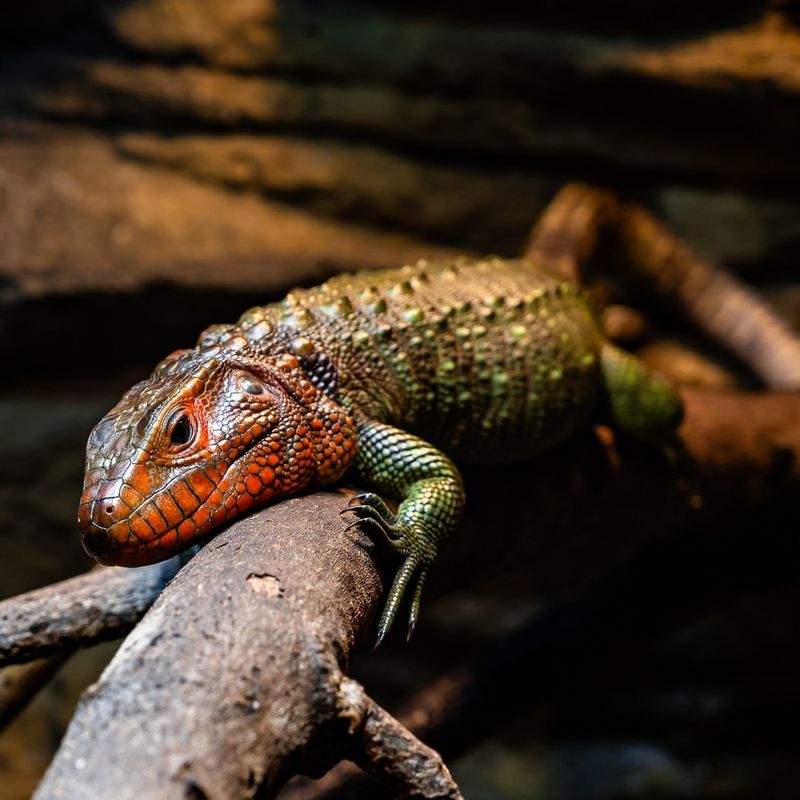
Caiman lizards, with their vivid coloration and robust bodies, are often mistaken for their crocodilian namesakes. Found primarily in the Amazon Basin, they are agile swimmers. Their long, flattened tails aid in propulsion through water.
These reptiles have a unique diet, primarily feasting on snails and crustaceans. Their strong jaws and teeth are perfectly adapted for crushing shells. Although they may seem intimidating, caiman lizards are generally harmless to humans.
When observing them in the wild, it’s crucial to respect their space. Their defensive behavior includes puffing up their bodies and tail-whipping would-be threats. Appreciating from a distance ensures both your safety and the lizard’s comfort.
3. Fer-De-Lance
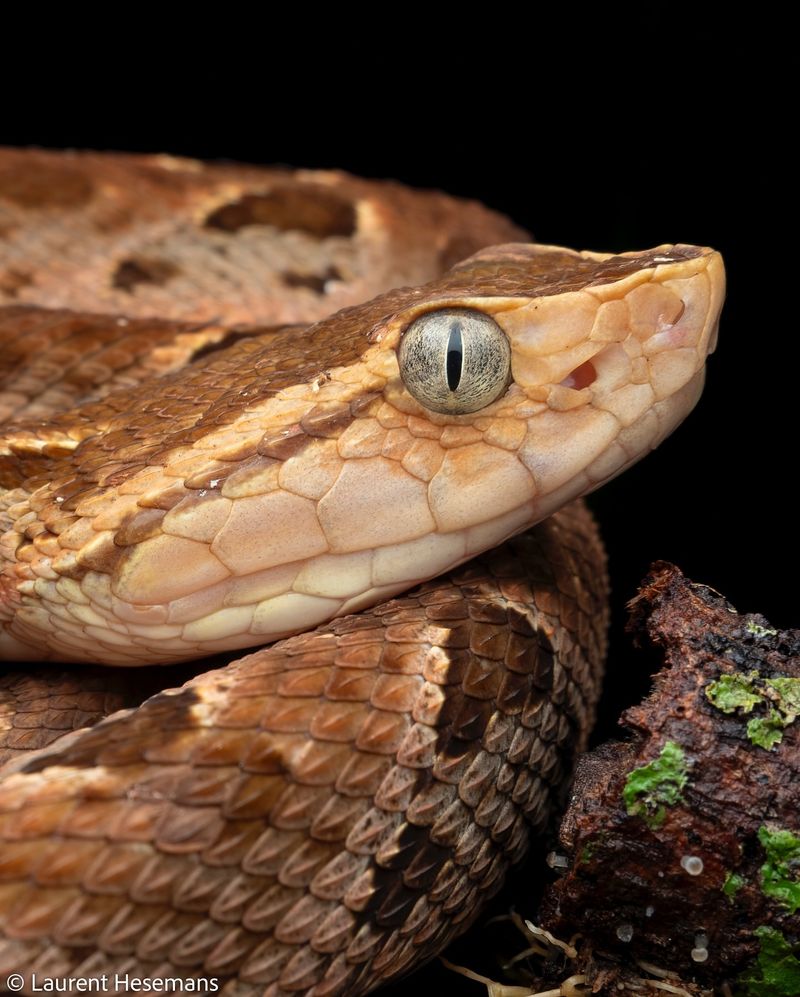
The fer-de-lance, a highly venomous pit viper, commands respect and caution. Found in Central and South America, it’s responsible for numerous snake bites. Its venom can cause severe tissue damage, making encounters potentially life-threatening.
This snake’s color pattern varies, providing excellent camouflage among fallen leaves. It employs a sit-and-wait strategy, striking swiftly when prey or threats come too close. Recognizing its habitat and behavior can reduce accidental encounters.
Wearing protective clothing and watching your step in snake-prone areas is advisable. Quick medical attention is crucial if bitten. Educating yourself on local wildlife can significantly enhance your safety in fer-de-lance territories.
4. Bushmaster
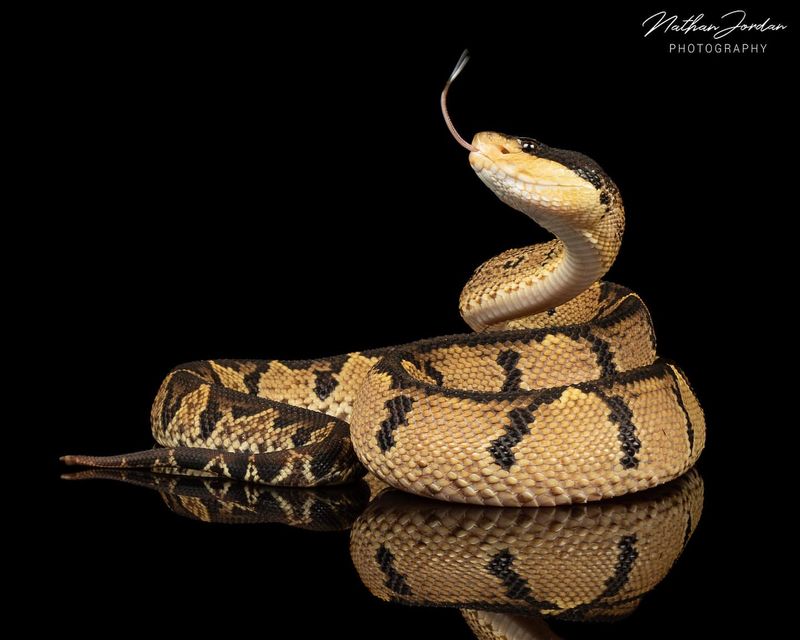
Among the longest venomous snakes, the bushmaster is a formidable presence in South American forests. Its potent venom and sheer size, reaching over 10 feet, make it a creature to avoid. Despite its lethality, bushmasters are reclusive.
They prefer humid environments, often found in undisturbed rainforests. Their cryptic coloration aids in remaining unseen. When disturbed, they can strike rapidly, delivering a dangerous dose of venom. Observers should tread carefully in known bushmaster habitats.
Avoiding dense underbrush and keeping to well-trodden paths can minimize risks. Awareness of your surroundings is key when exploring potential bushmaster territory. Their role in the ecosystem is vital, and observing them from afar respects their natural behavior.
5. Black Caiman
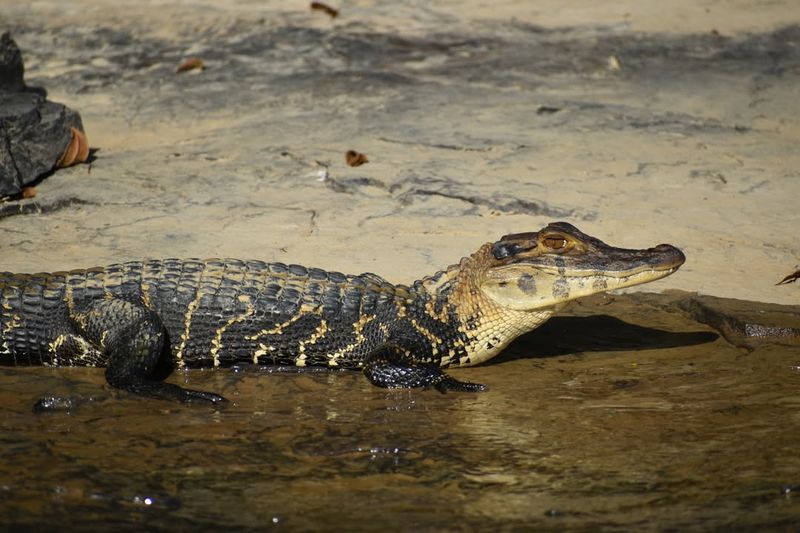
Inhabiting the Amazon Basin, the black caiman is the largest predator in its ecosystem. Its stealthy approach and powerful jaws enable it to catch a wide range of prey, from fish to mammals. Measuring up to 20 feet, it’s an awe-inspiring sight.
Their dark, scaly skin provides perfect camouflage in the dark waters. Black caimans are mostly nocturnal hunters, using their acute senses to track prey. Human encounters are rare but require caution.
When navigating waters where black caimans reside, remaining vigilant is essential. Avoiding swimming or wading in these areas at night reduces the risk of encounters. Their conservation is important, as they play a crucial role in the aquatic food chain.
6. Eyelash Viper
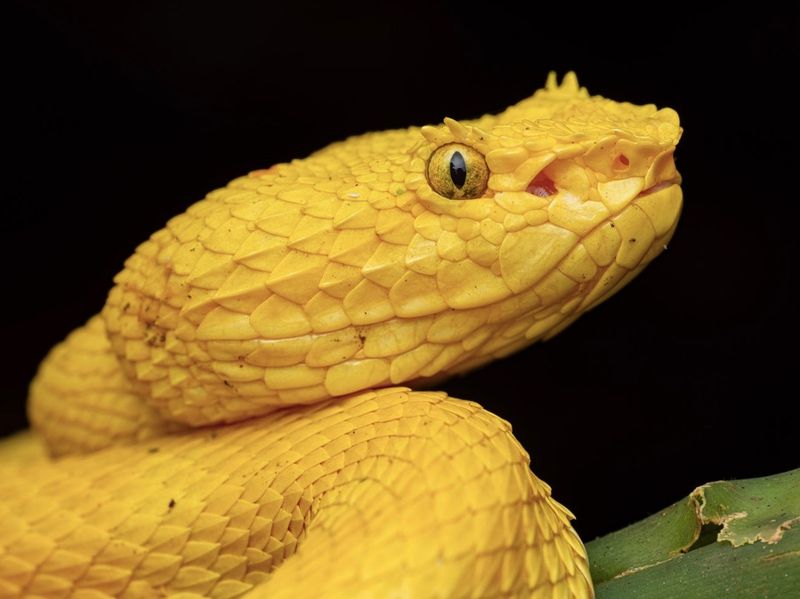
The eyelash viper, with its striking appearance, is a master of disguise. Its unique scales above its eyes resemble eyelashes, and its vivid coloration can vary from yellow to green. This viper is both beautiful and dangerous, possessing a potent venom.
Found in Central and northern South America, it often inhabits lowland forests. Its arboreal nature allows it to ambush prey from above, such as birds and small mammals. The eyelash viper’s bite can be dangerous to humans, requiring immediate medical care.
Observing this reptile in the wild demands caution and distance. Appreciate its beauty from afar, ensuring personal safety and respecting its space. Knowledge of its preferred habitats can prevent unwanted encounters.
7. Boa Constrictor
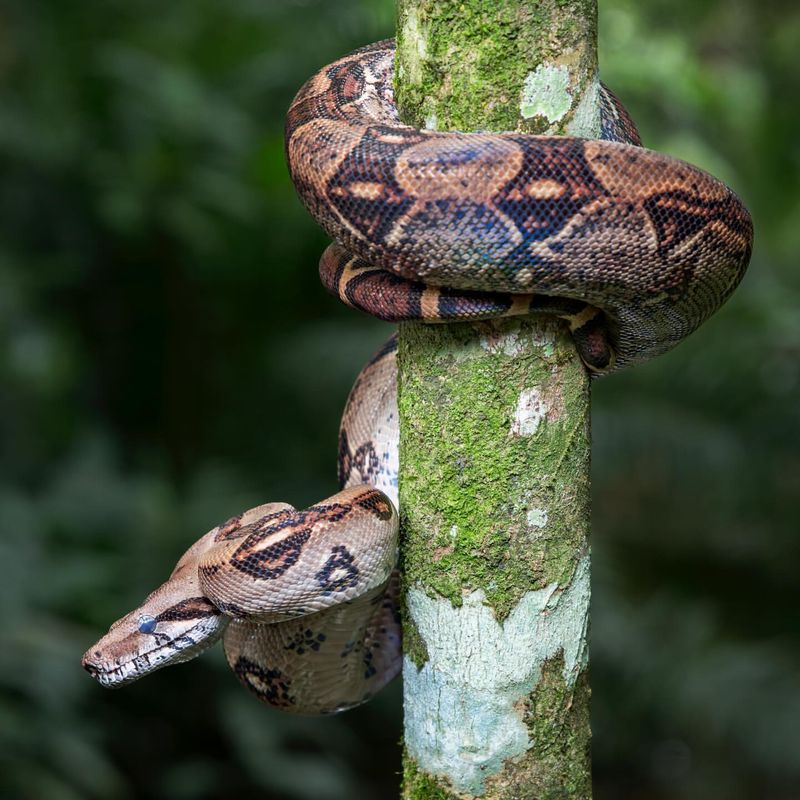
Among the most iconic snakes, the boa constrictor is a symbol of strength and stealth. Native to South America, it thrives in diverse habitats, from rainforests to arid regions. Their muscular build allows them to constrict and subdue prey efficiently.
These snakes are often found coiled in trees or hidden in underbrush. Their patterns provide effective camouflage, blending seamlessly with their surroundings. Despite their size, they are not aggressive towards humans unless threatened.
When encountering a boa constrictor, maintaining a safe distance is wise. Their role in controlling rodent populations is vital for ecological balance. Educating oneself about local wildlife enhances the experience while ensuring safety during adventures.
8. South American Rattlesnake
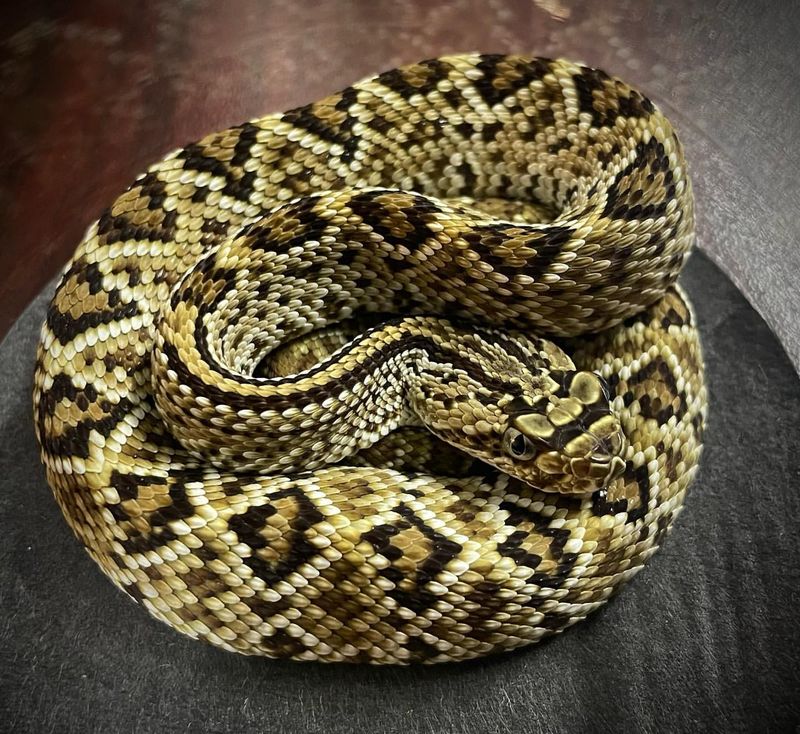
The South American rattlesnake is as fascinating as it is feared. Its powerful venom can cause severe reactions, making it one of the continent’s most dangerous snakes. Found in various environments, from grasslands to forests, it adapts well to its surroundings.
Recognizable by the distinct rattle at the end of its tail, this snake warns potential threats. Its striking ability and venomous bite necessitate caution. Wearing sturdy boots and remaining alert in rattlesnake habitats is prudent.
Understanding their behavior can prevent negative encounters. If faced with a rattlesnake, backing away slowly and allowing it to retreat is the best course of action. Their ecological role in controlling pest populations is crucial.
9. Spectacled Caiman
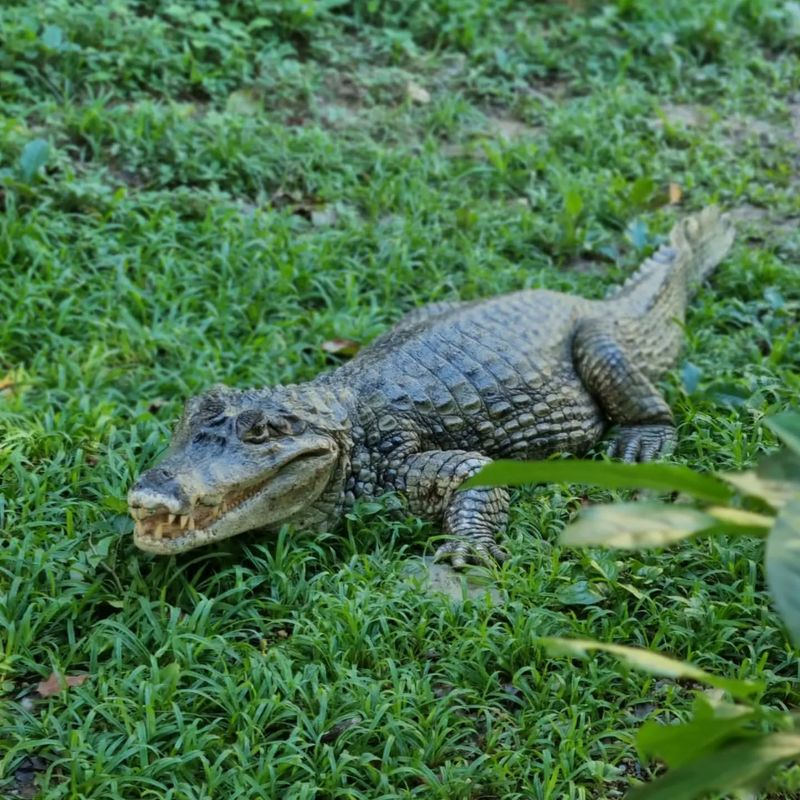
The spectacled caiman is a common sight in South America’s freshwater habitats. Its name derives from the bony ridge between its eyes, resembling spectacles. This adaptable reptile thrives in various environments, from rivers to swamps.
Despite their relatively small size compared to other crocodilians, they are formidable hunters. Their diet includes fish, birds, and small mammals. While not typically dangerous to humans, they deserve respect and distance.
When near caiman-inhabited waters, caution is key. Avoiding feeding or provoking them ensures safety. Observing these reptiles from afar allows appreciation of their role in maintaining ecological balance. Their conservation status highlights the need for habitat protection.
10. Yellow Anaconda
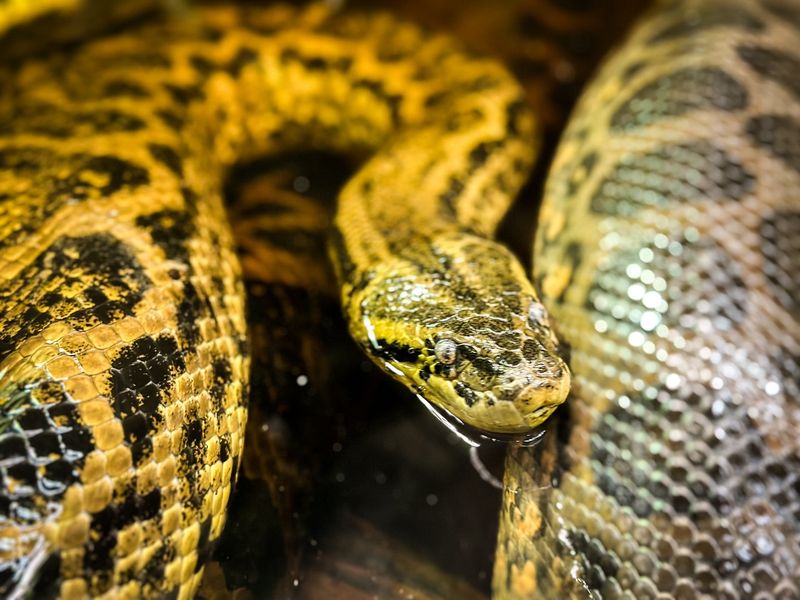
Smaller than its green counterpart, the yellow anaconda is nonetheless impressive. Inhabiting the wetlands of Paraguay and Argentina, this non-venomous constrictor is an adept swimmer. Its yellow and black patterned skin aids in blending with aquatic environments.
These snakes hunt a variety of prey, including fish, amphibians, and small mammals. Though powerful, yellow anacondas pose little threat to humans. Respectful observation is encouraged when in their habitat.
Awareness of their presence and behavior enhances safety. Keeping a respectful distance allows for a safe and enriching wildlife experience. Their role in the ecosystem as both predator and prey underscores their importance.
11. Tegu Lizard
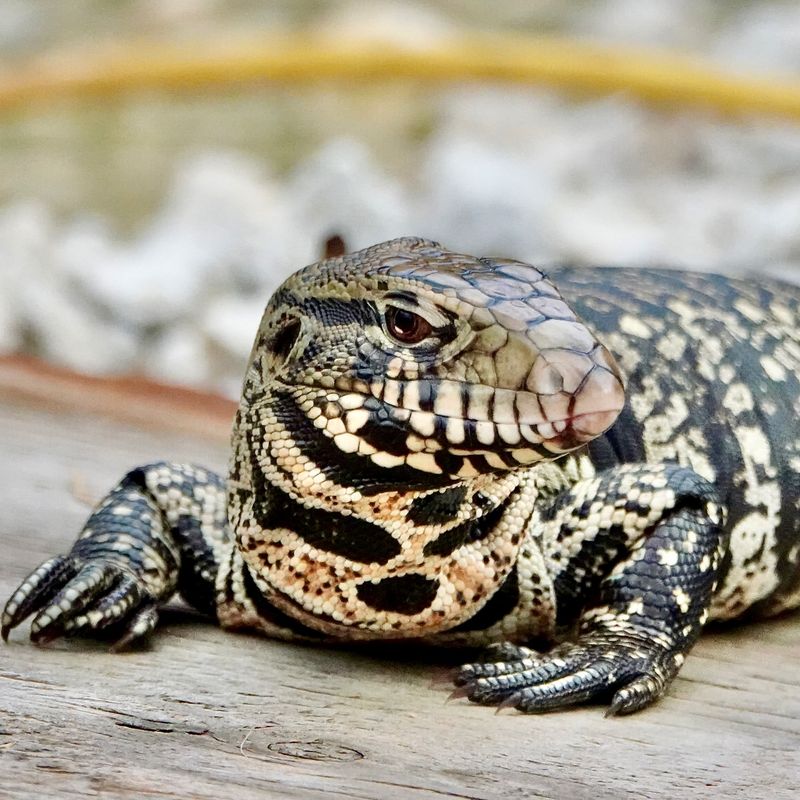
Tegu lizards are remarkable for their intelligence and adaptability. Found in various South American habitats, they are one of the largest lizard species on the continent. Their robust bodies and strong jaws make them effective foragers.
These omnivores consume a diverse diet, including fruits, insects, and small animals. Despite their intimidating appearance, tegus are generally not aggressive towards humans. Observing them requires caution and respect for their space.
Understanding their behavior and ecological role promotes coexistence. Tegus contribute to seed dispersal and pest control, highlighting their value. When encountering a tegu, appreciating from a distance is both wise and respectful.

